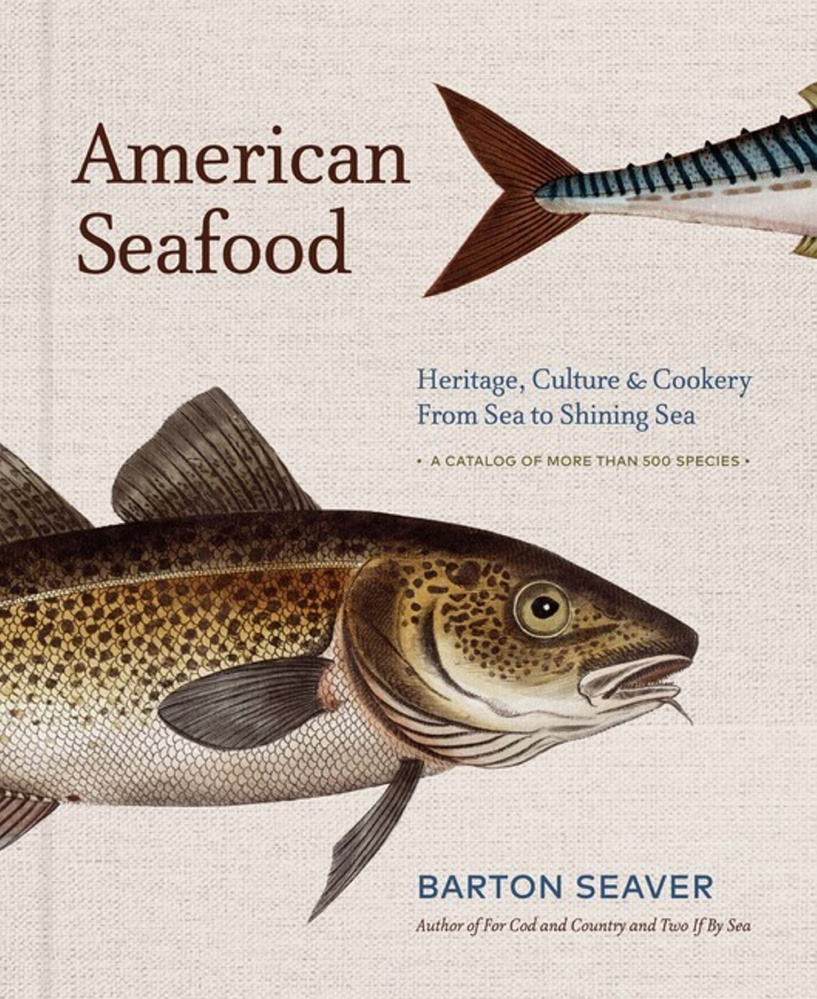“American Seafood: Heritage, Culture & Cookery from Sea to Shining Sea,” is a huge (520 pages) and encyclopedic book. It’s the latest work, the seventh, from the indefatigable Barton Seaver, sustainable seafood expert, chef, South Freeport resident and frequent writer of exhaustive books.
This one opens with several essays about such things as “The Character of Fishermen” (“But at the core of fishermen’s character is a deep understanding of nature, as well as great pride and joy that they provide food for our nation through their physical labors”) and “The Hand of Man in a Dynamic Environment” (“Bounty must no longer be measured by what we can take from the oceans, but rather by what the oceans can afford to give us”).
But the bulk of the book is given over to Seaver’s “Complete Catalog of American Seafood,” which ranges from A (abalone) to Z. Well, not quite Z; the last fish he details is wreckfish.
In between, we get to know Alfonso squirrelfish, Spanish grunts, Mola molas, Dolly Vardens and hundreds of others in listings that are a mix of reference work, cookbook and personal guide. It’s a book for dipping into, not reading straight through; it goes wide, not deep. In entries that run from just a few paragraphs to more than a dozen pages, readers learn the biology and behavior, family and history of each fish (and its fisheries).
If the reader tires of taking in fish facts, she can page through the many fascinating archive photos and reprints of vintage posters, postcards and advertisements.
Seaver also talks with readers about how to cook and eat American fish, and he describes their qualities. Writing on smelt, for, example, he notes, “The conditions necessary to fish for smelt are harsh, but the fish themselves are really quite tame in terms of their culinary profile – that is, they don’t challenge with an overly robust flavor the way anchovies do, but they are chockful of personality all their own.”
Seaver has a lot to say about lobster (as it should be). We’ve excerpted just a fraction of that entry, which concerns Seaver’s opinion on soft-shell vs. hard-shell lobsters. The latter are more valuable, so much so that researchers are collaborating to toughen up lobster shells in hopes of bringing Maine lobstermen, who generally fish for soft shells, a higher return. But Seaver, who ran a highly touted seafood restaurant in Washington, D.C., before he moved to Maine, is a fan of the former. Here’s why, as he writes in “American Seafood”:
“When a lobster sheds its shell, its flavor and texture profile changes as its system is busy building and hardening its new protective armor. As it builds this larger shell, its body is not quite big enough to fill it out, and so it takes in seawater to fill the gap, and this has led to a great deal of heated debate and consternation among those who consider themselves authorities. Commonly lobsters are broken into two categories, new shells (those recently shed), also known regionally as soft shells or shedders, and hard shells (those that have occupied their current shell for a time). Hard shells are quite packed with meat, as the animal has grown and is pressing against its current confines before it sheds to continue its growth. The new-shell lobsters do not yield as much meat and, when cracked open, release seawater from inside. Many chefs and consumers are turned off by this, but I believe a new-shell lobster is at its peak. Taking on that sea brine helps to season the meat, and during cooking the more porous new shell releases some of its spirit into this liquid, thus infusing the meat further with rich lobster flavor. And as for the liquid itself, there can be made no better lobster broth or stock than the pure essence that comes from within. I think of it like an oyster – no one would think to open an oyster and pour off the unctuous salty brine surrounding the plump morsel. Indeed, the oyster’s liquor is one of its best assets. New shells are also quite a bit easier to clean, as often nothing more than a strong set of hands is needed to crack the shells. But for all my championing of new shells, there are legendary chefs whom I look up to and greatly admire who wouldn’t waste a second telling me how ignorant and wrong I am in this matter.
“Regardless of this professional, and perhaps personal, disagreement, the bottom line is you simply cannot go wrong with lobster any which way it comes.”
Send questions/comments to the editors.




Comments are no longer available on this story